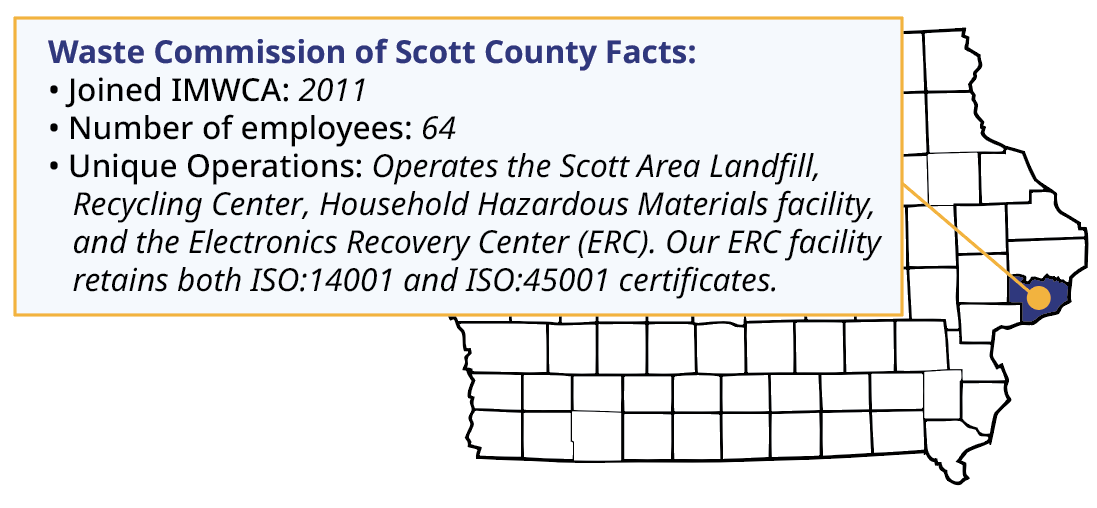
As we bid farewell to winter and welcome the arrival of spring, our attention turns to ensuring a safe transition for our work activities. This involves prioritizing key safety measures to protect our employees and maintain a secure working environment:
Equipment Inspection and Training: Prioritize inspecting and evaluating all equipment slated for use in the upcoming season. Ensure safety devices are present and operational. Provide comprehensive training to employees on safe equipment operation.
Rollover Protection and Seatbelt Policy: Verify that rollover protection systems (ROPS) on mowers and other applicable equipment are in good condition and securely installed. Emphasize the importance of using safety belts when operating vehicles with ROPS, enforcing a mandatory seatbelt policy for all occupants.
Hearing Protection and Conservation Program: Check if employees have suitable hearing protection for their work environment. Evaluate your Hearing Conservation Program; if none exists, consider resources like IMWCA’s program available on our website.
Personal Protective Equipment (PPE) Evaluation: Assess the adequacy of head, hand, and eye protection for the tasks expected during this season. Utilize resources such as IMWCA’s model policy for Personal Protective Equipment.
Member Highlight: Waste Commission of Scott County

Nolan Moore, EHS Manager provided some insight on what the Waste Commission of Scott County has been doing to develop and maintain their safety culture.
What is your facility doing to provide a safe workplace?
We have a toolbox talk twice a month, providing training on different safety topics to all members. We use the toolbox talk to deliver consistent messaging across all facilities and allow for employee feedback. Maintaining an open line of communication between all levels of employees is essential for fostering a strong safety culture and addressing concerns across all facets of our facilities. Regular reviews and updates of our safety policies ensure that we are continuously monitoring incidents, staying informed about new guidelines or recommendations from health and safety authorities, and adjusting safety measures accordingly.
Do you have a Designated Provider and a Return-To-Work policy?
The Commission has a local designated provider and a Return-To-Work process that is followed.
Please describe your safety committee structure. Who is on the committee, how often do you meet and what are the short-term goals of the committee?
Our safety committee includes one employee from each of our facilities and includes a manager, supervisor/coordinator, and technicians. We meet monthly and our short-term goals are supporting the Waste Commission’s safety programs, reviewing incidents, regularly scheduling safety audits, and making recommendations to the management team.
What other proactive safety steps do you practice?
We conduct annual compliance reviews at all of our facilities, along with internal and external audits. We use safety software that allows any employee working for the Commission to report near-misses, hazard identifications, and incident reports.
Our safety committee has orchestrated a “hazard identification challenge” for employees. We challenged them to identify hazards and a solution to fixing them for a chance to earn a prize. During this challenge we had 20 participants submit a hazard and a solution to fix them. We also conducted a “PPE challenge” between our facilities. These were unique ways that our Committee found to engage our staff.
What words of wisdom do you have for other members of IMWCA to help them develop their safety culture.
Celebrate successes and learn from failures.
What current issues is the committee working on now?
We are currently working on being creative in ways we can engage our staff. The Committee is looking at hosting an event at The Landfill and Recycling Campus during OSHA’s Safe and Sound Week (August 2024). This would include sharing site guidelines and meeting with customers out in the field to discuss any issues they may have while being on our site.

All Terrain Vehicles (ATVs) and Utility Vehicles (UTVs) have become the new “Swiss army knife” of local governments. Public works and solid waste, parks, fire and law enforcement have all found major roles in their operations for these off-road vehicles and as a result, the number of ORVs in the local government workplace has grown significantly. With the increase in usage has come an increase in incidents with operator injuries.
One of the major contributing factors in incidents involving ORVs is many of the operators have never been trained on how to operate the vehicle. Many people assume that these vehicles are like driving an overpowered golf cart or small truck. The reality is they operate very differently depending on the surface and speed of operation. To avoid injury and equipment damage, employers should take several steps to prepare the operator.
- When someone is expected to operate an ORV, they should be trained, by a qualified person, on how to properly navigate the equipment in the given terrain. If they will be climbing hills, for example, they need to be instructed on that skill including with and without a load.
- Employees should be required to wear seatbelts when operating ORVs. Several fatalities involving ORVs involve the operator being ejected during a rollover and crushed.
- Operators should wear helmets, eye protection and gloves. Even with windshields, operators are subject to branches, flying material and being tossed about. The PPE listed is always recommended by manufacturers for a reason.
- Operators need to know the proper way to tow or trailer an ORV. Improper techniques can lead to significant vehicular accidents.
To help IMWCA understand these and other safety issues involving ORV operation we have developed a model Off-Road Vehicle Operators Manual on our website.
ORVs are a great tool to help local governments get some challenging tasks done but as with any tool, they can become a bad risk if not used correctly.





